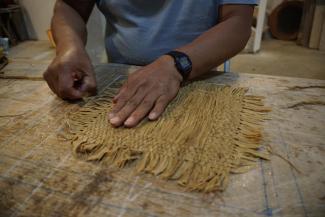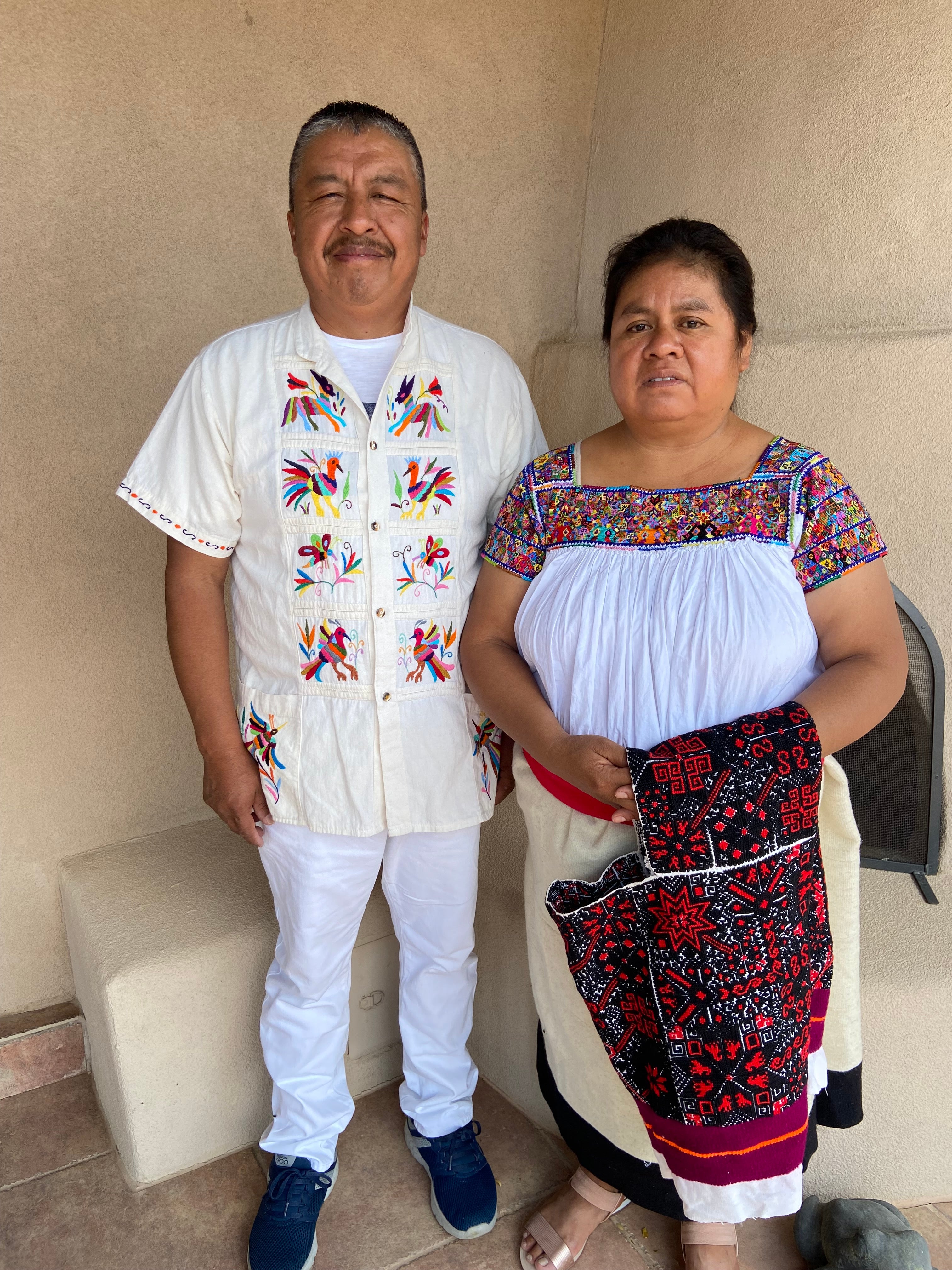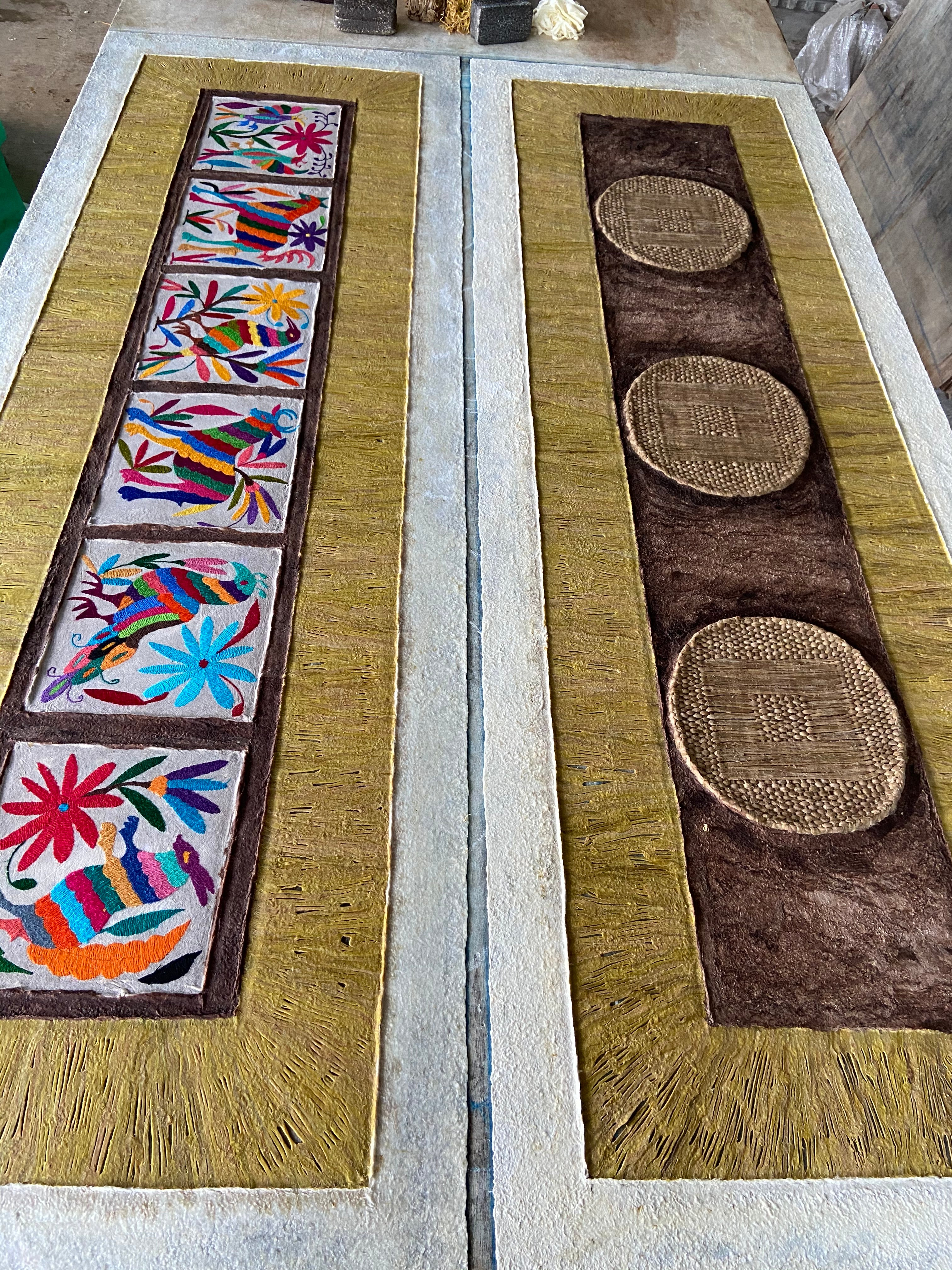
In San Pablito, Puebla, Mexico, there is a tradition of making papel amate (Otomi bark paper). In recent years, Julio Laja Chichicaxtle (Otomi) has represented his family, town, and Indigenous tradition at the Cultural Survival Bazaars, where he sells papel amate works of art. The bark is harvested from a tree that is called popova in the Ñühü language. The tree was selected because it is the only one that can produce four different colors of paper; it is known as a “generous tree” because it can be harvested all year long without causing damage. Once the bark is collected, each art piece takes a few days to make.
The tree bark is harvested by community members, who then transport the material to the artists. While fresh bark is drying, dry bark gets “cooked” in boiling water mixed with lime, ash, and firewood. Laja explains that the process requires constant observation: “It cooks for about five or six hours, and when it is cooking we wait all night. Then we take it out to wash the fiber because [that is when] it has a lot of color, and [we] have to wash it so that it stays that way.” The resulting colors are brown, white, green, and ochre. White is the only color that is not 100 percent natural, requiring a bit of bleach to achieve the desired shade.

Julio Laja Chichicaxtle with his business partner and wife Cirila Trejo Gonzales, wearing their embroidery.
Laja honors his heritage by identifying the history of the art related to land and place. He says that healers were the first to work with the bark of the generous tree using papel amate, at that time making it into small sheets as a way to wrap and store the medicines they prescribed to heal community members. Through his work, Laja also connects with his family’s lineage of art-making. His family has been making papel amate for more than 200 years, passing the knowledge down through the generations. Children start learning and helping around seven years old. Each day they are asked to make a little before and after school, and by age 15 they know a great deal. Laja learned from his grandfather and taught his kids, who are now in their 20s. Today, Laja’s family also makes and sells elaborately embroidered tapestries and bed covers depicting animals and plants.
Through the process of making papel amate, Laja asserts his family’s wisdom: he knows what enough is. As demand for his family’s products has increased, especially due to international exposure such as the Cultural Survival Bazaars, he has faced the question of whether or not to expand the business. After some discussion, he and Cirila Trejo Gonzales—his business partner and wife—decided to maintain their way of life, capping their production team at 12 people made up of immediate and extended family. They employ up to an additional 18 people, including those who harvest the bark.

Laja’s family makes both colorful embroidery representing nature and various styles of papel amate made from bark.
According to Laja, papel amate has always been popular as an item to sell, even when it was made quite plainly in past generations. There is nothing plain about their weavings today, however, with elaborate centers and fretwork designed by Trejo ranging in size from 40x60 cm to 120x240 cm. At the Bazaars, customers flock to their booth and then spend ample time unstacking the individual pieces to select the design, bark color, and application for where the item might go in their home, whether as table setting, wall hanging, or as art to frame. It is rare for a customer not to find one they want to take home.
All in-person Cultural Survival Bazaars in 2021 are postponed due to the pandemic. Like Laja, we have missed the in-person Bazaars and will soon
announce the dates for the July 2022 Bazaar season. We hope to be together soon, safely, and in celebration of Indigenous art. Until then, please consider supporting and buying directly from our Bazaar artists by visiting our directory of artists at bazaar.cs.org.
